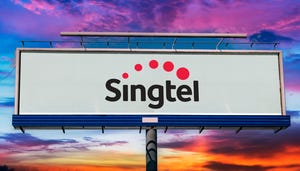3GPP Picks Femtocell Standard
Femtocell standardization nears reality as 3GPP decides on an architecture and starts work on a new standard interface
June 4, 2008

The squabbling over competing 3G femtocell designs is over, as the 3rd Generation Partnership Project (3GPP) standards body has adopted an official architecture and started work on a new standard for home base stations.
The 3GPP’s aim is to have the new standard completed by the end of this year, which would be a faster outcome than might have been expected, considering that vendors were still duking it out over a common approach just a few weeks ago.
What’s new is the specification for the interface between the Home Node B (HNB), which is 3GPP-speak for femtocell, and the Home Node B Gateway (HNB-GW), which is the 3GPP term for femtocell gateway. The new interface will be called Iu-h and is a blend of existing standards Iu and generic access network (GAN), sometimes referred to as unlicensed mobile access (UMA).
The 3GPP chose the solution backed by Alcatel-Lucent (NYSE: ALU), Kineto Wireless Inc. , and its partners Motorola Inc. (NYSE: MOT), and NEC Corp. (Tokyo: 6701). (See Kineto Supports HNB.)
Originally, AlcaLu, Kineto, Motorola, NEC, Huawei Technologies Co. Ltd. , Nokia Networks , and others all submitted proposals to the 3GPP for their particular flavors of interface for a feasibility study back in March. Faced with a logjam from so many different proposals, Kineto, Motorola, and NEC joined forces with AlcaLu, and they developed a joint proposal, which was approved at a 3GPP RAN plenary meeting last week.
“The 3GPP has said, ‘go forth and create the standard,’ ” says Steve Shaw, director of marketing at Kineto. “This is good news for us and for the femto community as well. We’re excited because the femto community now has a clear path to a standard.”
All femtocell vendors will have to make changes to their access points and network gateway equipment to match the new standard interface, but AlcaLu, Motorola, NEC, and those that already use Kineto’s GAN approach, such as Ubiquisys Ltd. , will have the least work to do. (See UbiquiSys, Kineto Interoperate, Kineto, Ubiquisys Team, and NEC, Kineto Partner.)
Ubiquisys announced today that it will have products ready that support the new standard by December of this year. (See Ubiquisys Supports Standard.)
“For us, Iu-h is really very close to what we currently do,” says Will Franks, chief technology officer and founder of Ubiquisys. “For us, there will be a relatively small amount of development work… Some will have to compromise more than others.”
The 3GPP also decided that the Home Node B will incorporate Node B capabilities as well as the radio resource management functions of a standard radio network controller (RNC). The Home Node B Gateway, which aggregates traffic from lots of Home Node Bs, will connect to the mobile core using existing standard Iu-cs and Iu-ps interfaces.
This approach is in line with the reference architecture recently agreed upon at the Femto Forum Ltd. , which also has a broader focus to encompass all radio access technologies, including CDMA and WiMax. The Forum played a role in helping to reach a consensus among competing vendors' solutions. (See Vendors Unite on Femtocell Architecture, Femto Forum Tackles Integration, and Cisco, Ericsson Swell Femto Forum Ranks.)
The 3GPP decisions mean that a 3G femtocell standard should be adopted in the near future, which will be a big step toward interoperability between femtocell access points from different vendors and mobile operator networks -- which could help to drive down the cost of the appliances.
— Michelle Donegan, European Editor, Unstrung
About the Author(s)
You May Also Like



.jpg?width=300&auto=webp&quality=80&disable=upscale)








